

Of Contents Table
Educational Piece
An overview of the readings and key take-aways from this semester’s W2B class.
02
03
Interview & Collage
Interviews, artwork, and biographies representing the lives and stories of both inside and outside students.
04
Beyond the Classroom
A collection of grievances and comments from incarcerated men at Collins Bay.
05
Resources
Helpful resources to learn more about the justice system, the CSC, and your rights.
Knowledge & Power
A miscellaneous collection of essays and materials by both inside and outside students that reflect our W2B experience
Our Story

This magazine is a collection of voices, stories, and art created by students inside and outside Canadian prisons through the Walls to Bridges program. We call it Names Over Numbers because it reflects our belief in seeing people for who they truly are not as statistics, labels, or stereotypes, but as individuals with stories worth telling.
The Walls to Bridges course is unlike any other. Inside the walls of Canadian prisons, students from vastly different backgrounds come together as equals to learn from one another. We share our experiences, challenge our assumptions, and discover the humanity we all hold in common. The conversations are raw, vulnerable, and transformative.
Through personal narratives, interviews, and art, we tell stories that often go unheard. Each collage and every piece of writing is a testament to the resilience and creativity of the students involved. Together, we reflect on the prison experience in Canada and the larger philosophical questions of power and knowledge.
Names Over Numbers invites you to listen, learn, and reflect. These pages are an open window into a world that many never see. We hope that as you read, you’ll come to see the people behind the walls not as numbers, but as names, stories, and lives filled with potential.
With love,
December 2024
Walls to Bridges Class of ‘24
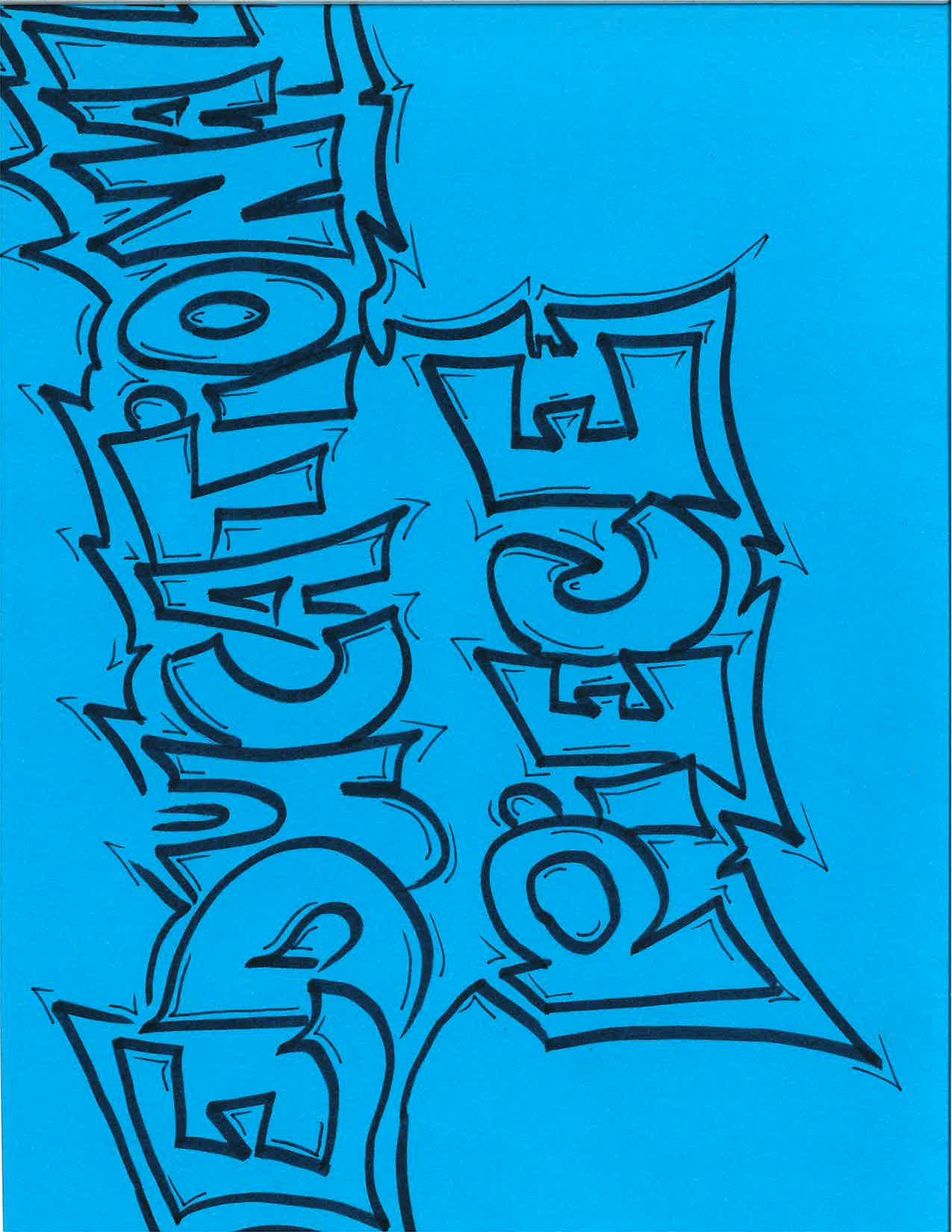










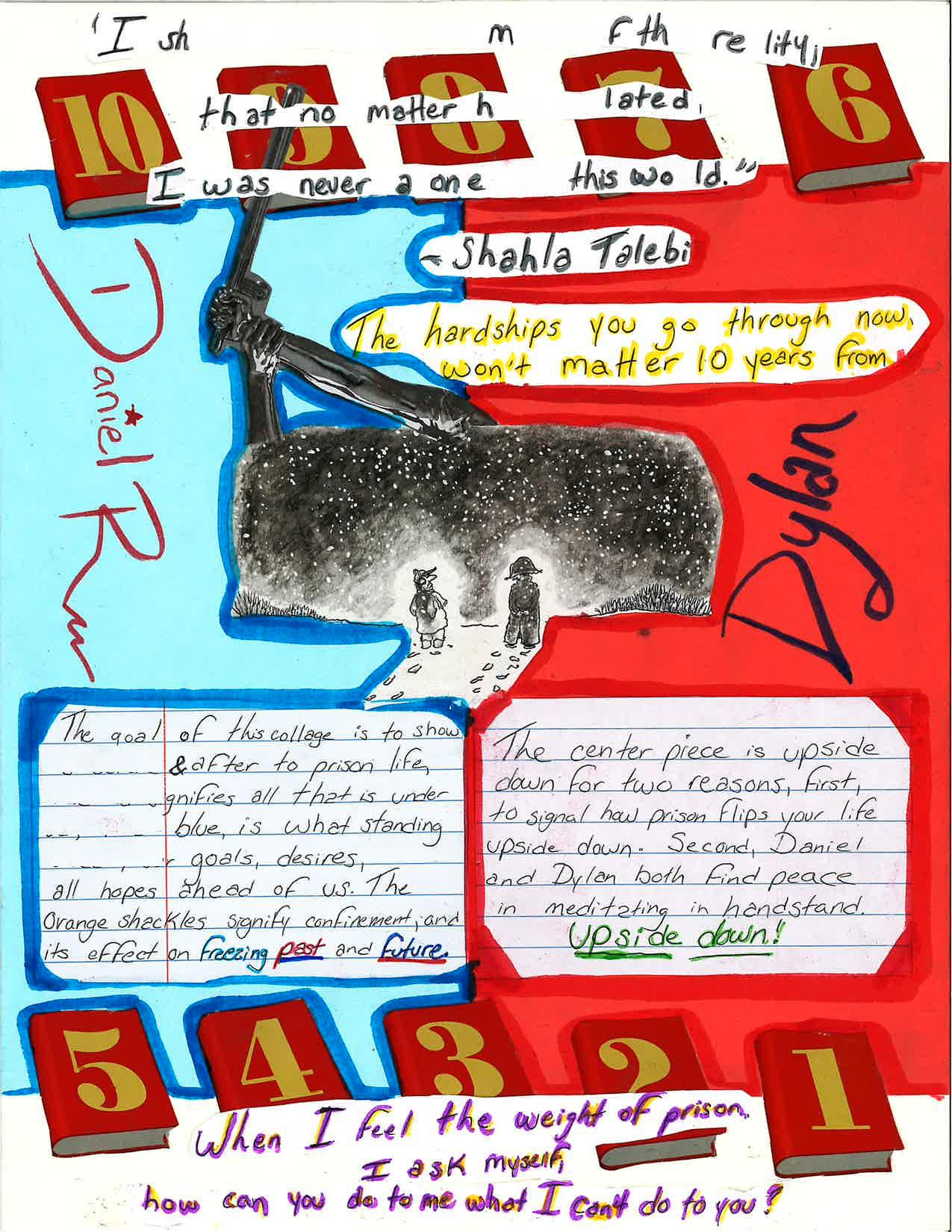


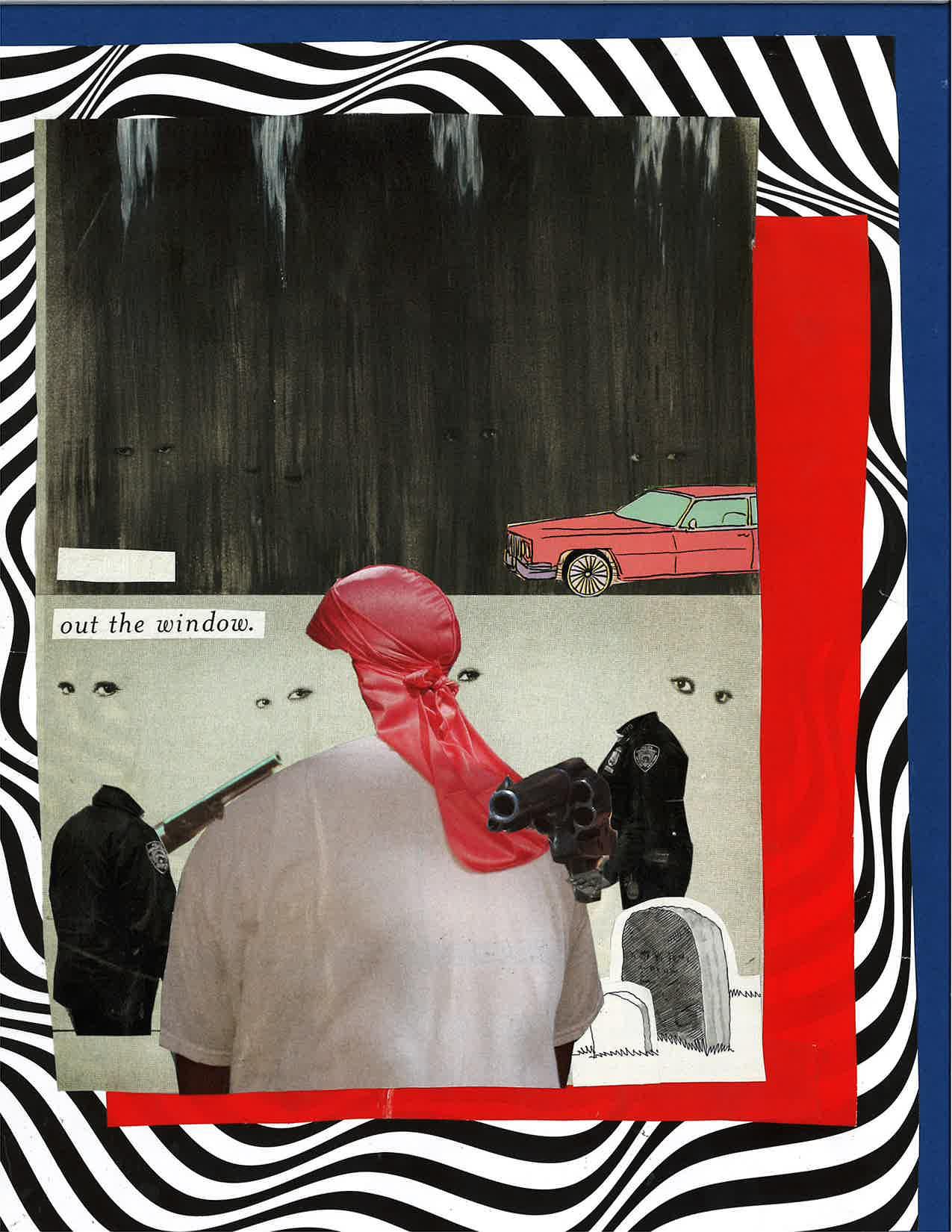


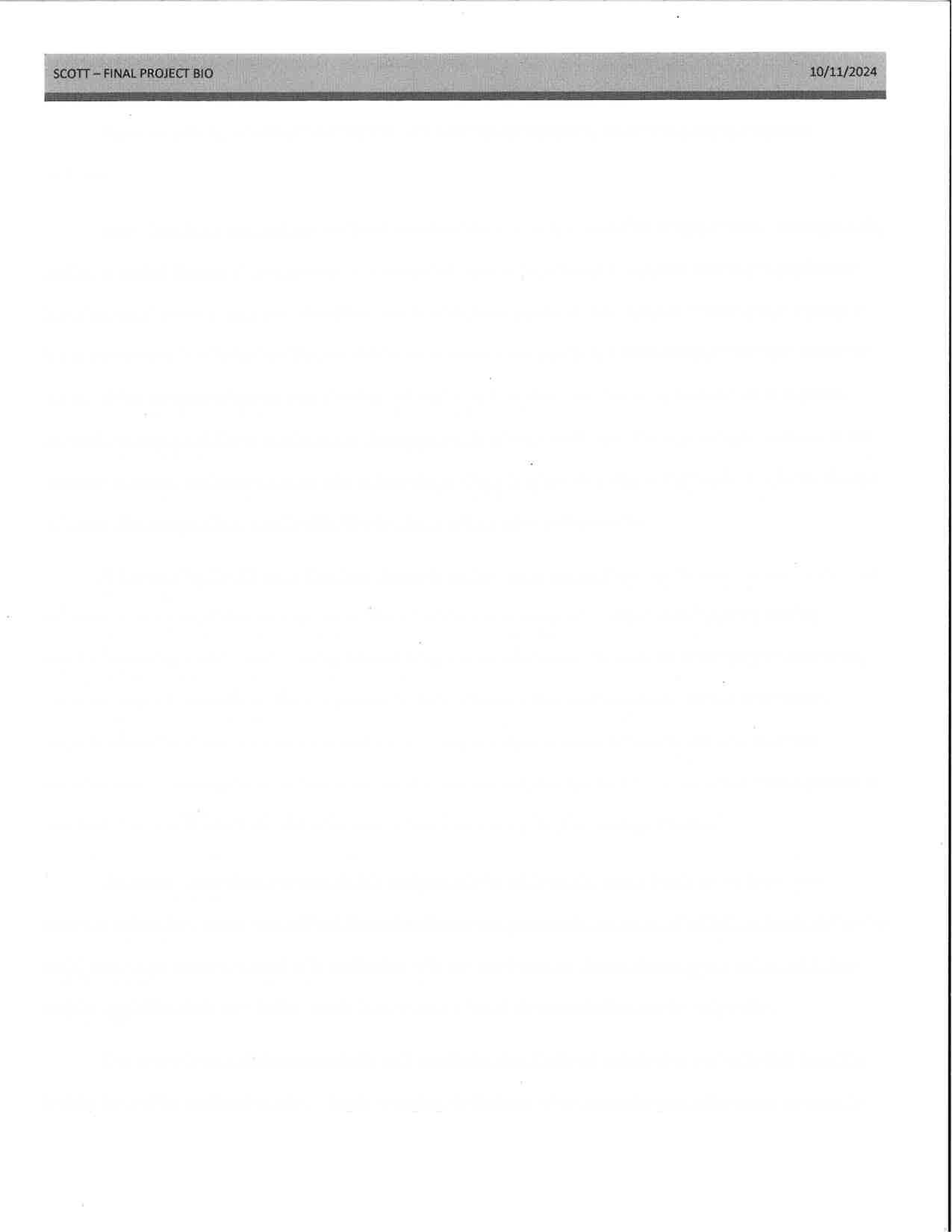


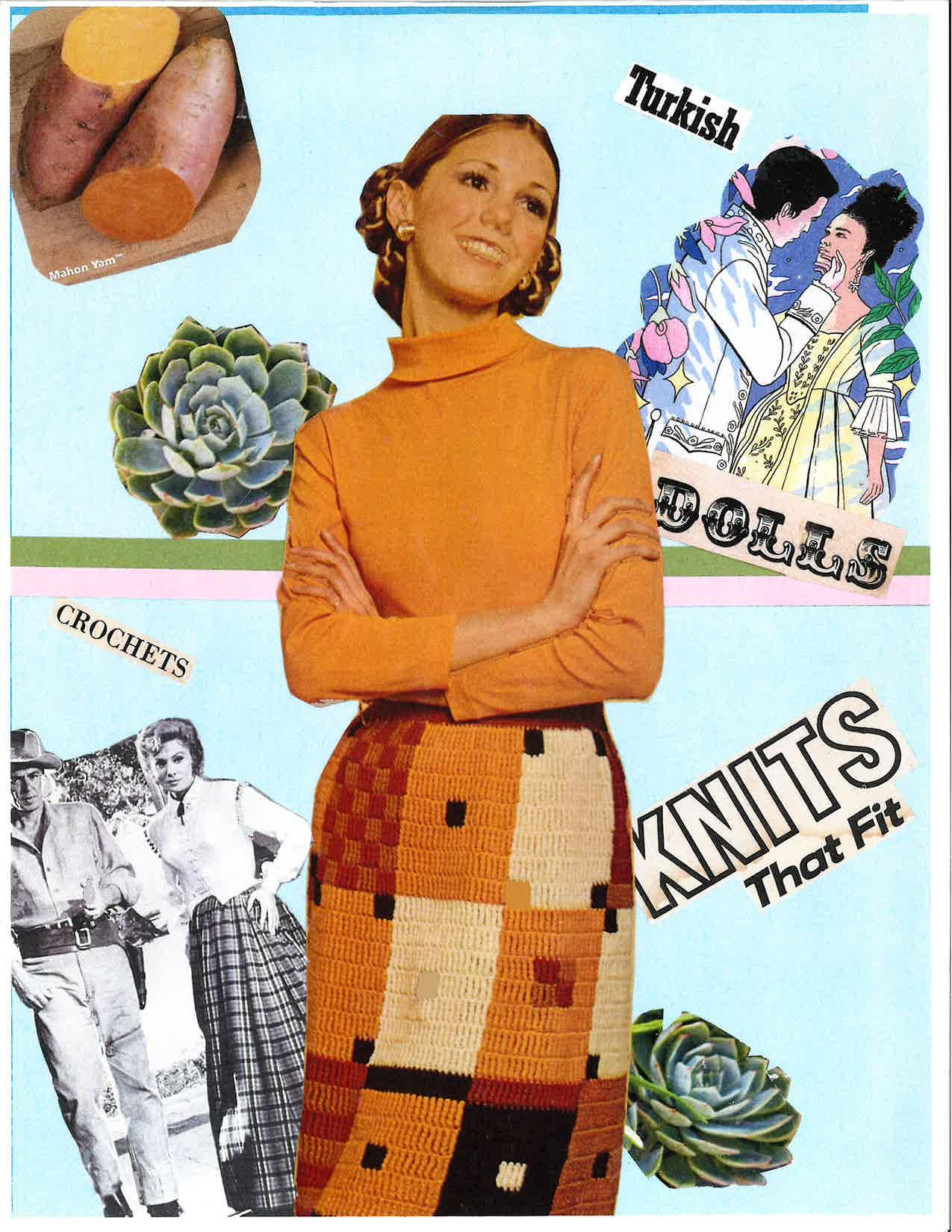
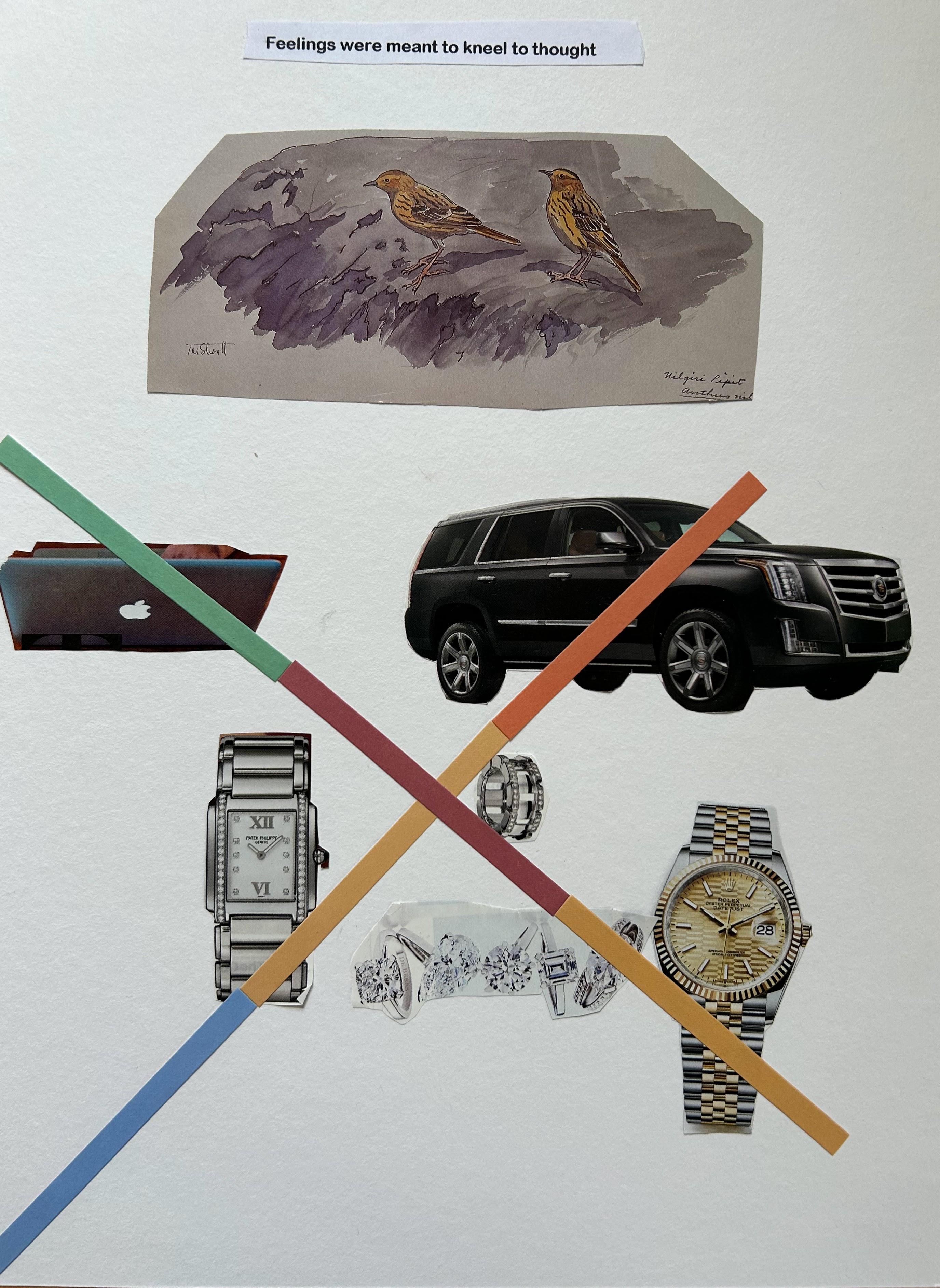
T h i s i n t e r v i e w w a s a c o l l a b o r a t i v e e f f o r t t o e m p h a s i s e r e c o n c i l i a t i o n a n d s h a r e d
h u m a n i t y B y a n s w e r i n g t h e s a m e s e t o f q u e s t i o n s , w e h o p e d t o i l l u m i n a t e b o t h o u r
s i m i l a r i t i e s a s i n d i v i d u a l s a n d t h e w a y s i n w h i c h o u r d i f f e r i n g c i r c u m s t a n c e s h a v e s h a p e d
u s D e s p i t e c o m i n g f r o m v a s t l y d i f f e r e n t w a l k s o f l i f e , w e d i s c o v e r e d c o m m o n v a l u e s ,
a s p i r a t i o n s , a n d s t r u g g l e s t h a t h i g h l i g h t h o w d e e p l y c o n n e c t e d w e a r e a s p e o p l e
W e c h o s e t o f o c u s o n r e c o n c i l i a t i o n b e c a u s e i t ’ s a t t h e h e a r t o f b u i l d i n g u n d e r s t a n d i n g
a n d b r e a k i n g d o w n t h e b a r r i e r s c r e a t e d b y s y s t e m i c i n e q u i t i e s T h i s p i e c e r e f l e c t s w h o
w e a r e n o t j u s t a s p a r t i c i p a n t s i n t h i s c o u r s e , b u t a s i n d i v i d u a l s c o m m i t t e d t o b r i d g i n g
d i v i d e s a n d c h a l l e n g i n g t h e n a r r a t i v e s t h a t d e h u m a n i s e t h e i n c a r c e r a t e d
T h i s i n t e r v i e w w a s d e s i g n e d t o c r e a t e a c o n v e r s a t i o n n o t j u s t b e t w e e n u s , b u t a l s o w i t h o u r r e a d e r s c h a l l e n g i n g t h e m t o r e f l e c t o n h o w m u c h o f w h o w e a r e i s s h a p e d b y o u r
e n v i r o n m e n t s . T o g e t h e r , w e a i m e d t o s h e d l i g h t o n t h e r e s i l i e n c e a n d u n t a p p e d p o t e n t i a l
t h a t o f t e n g o u n n o t i c e d b e h i n d p r i s o n w a l l s .
Aziz & Gurisha ABOUT US.


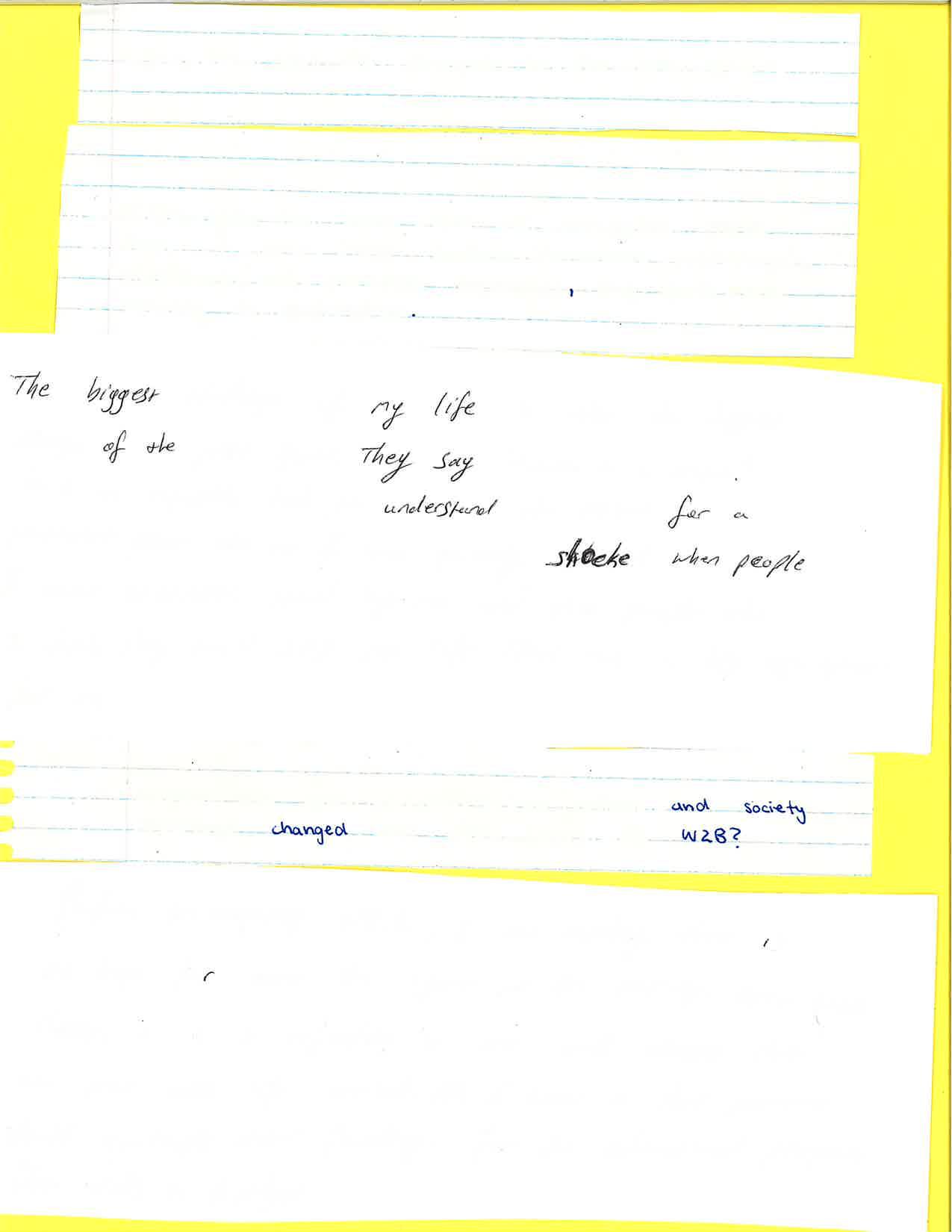
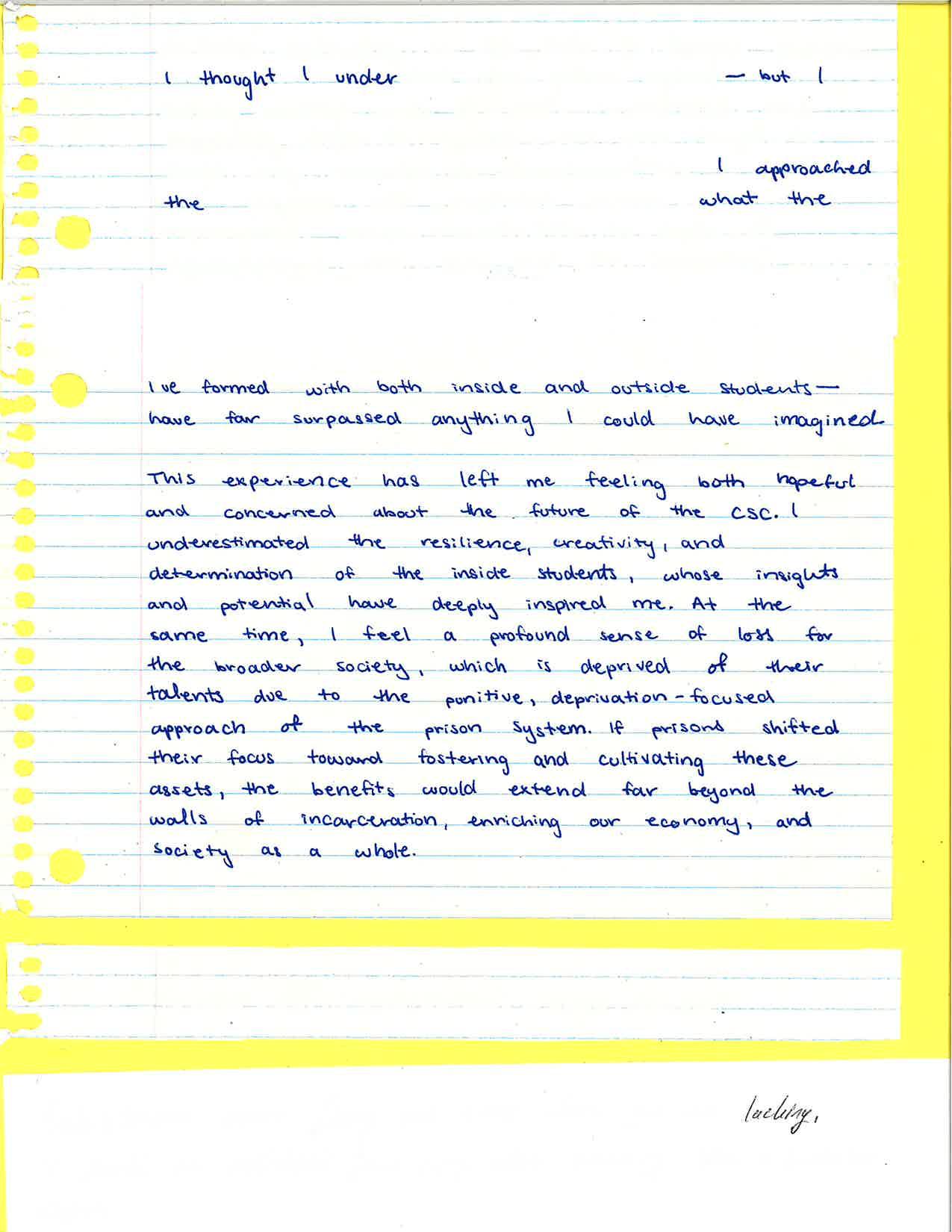

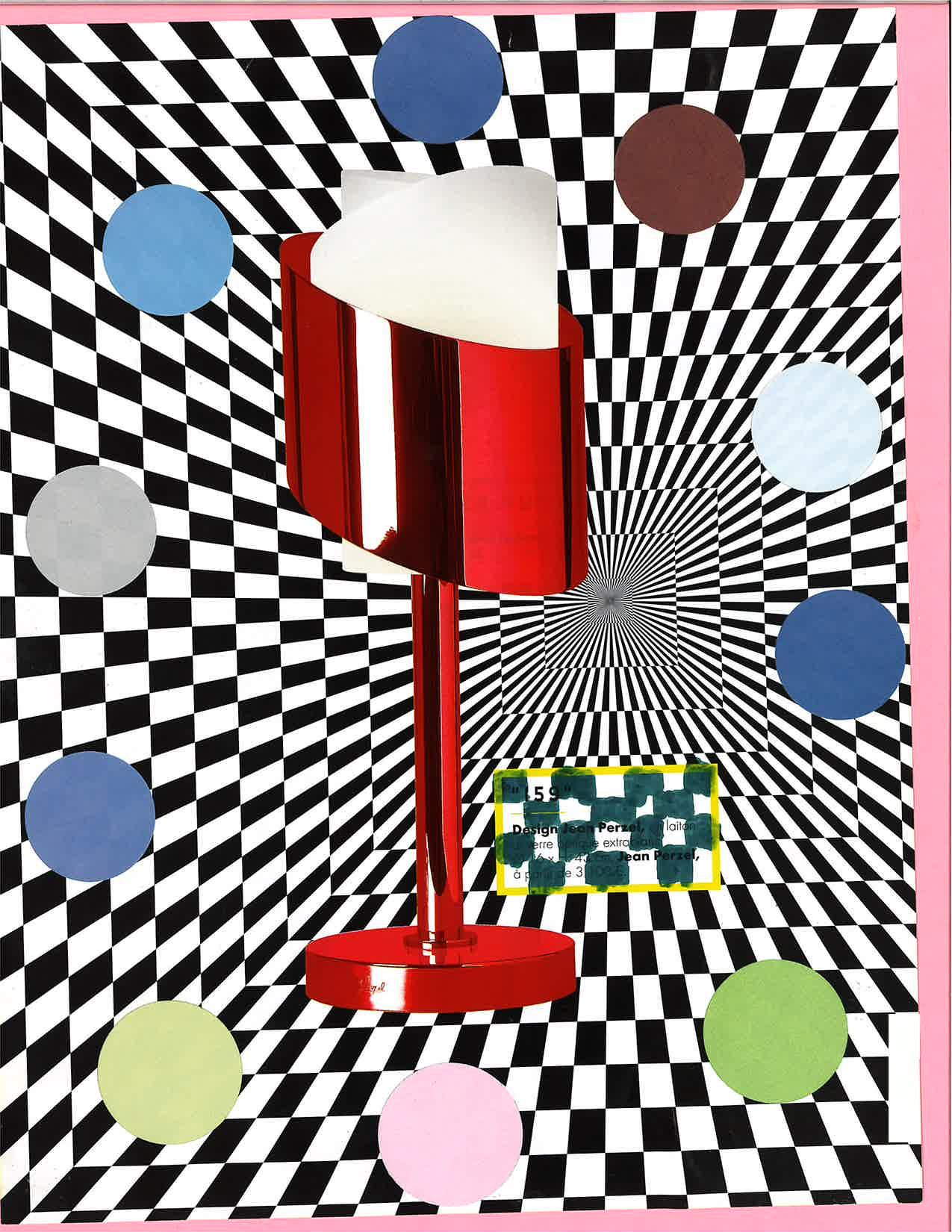
Mr. M’s Story, by
Alex
In her powerful poem “Canada So Polite,” El Jones challenges the common stereotype of Canadians as excessively polite. Jones unapologetically dismantles this notion by exposing the country’s horrific history of violence and oppression, particularly against marginalized groups such as Indigenous peoples. For Jones, this so-called “politeness” is a façade that conceals the pervasive injustices and inequalities that persist in Canada. In this sense, the concept of politeness underscores the country's profound hypocrisy.
During my experience in the Walls to Bridges program, I had the opportunity to interview a gentleman, whom I will refer to as Mr. M for the purposes of this paper. According to Mr. M, Jones’ poem serves as a compelling allegory for Canada’s approach to criminal justice. He observed that, despite the frequent rhetoric from politicians about rehabilitation and addressing systemic issues, significant injustices and barriers continue to plague the Canadian justice system.
In our conversation, Mr. M offered several recommendations for reforming the system to better align with its stated commitment to rehabilitation.
Mr. M’s first recommendation focused on improving the living arrangements at the Collins Bay facility. He explained that new inmates are initially placed in shared spaces with minimal privacy or autonomy. Over time, inmates can apply to move to a program on another side of the facility, where they receive private rooms, access to a communal kitchen, and a weekly grocery budget. According to Mr. M, this setup resembles “an apartment or college dorm.”
While Mr. M sees this program as a positive initiative, he believes it should be made more broadly available to those in minimum security. He highlighted how managing a budget and preparing meals helps inmates develop independence and practical life skills. These responsibilities, he argued, play a critical role in fostering self-reliance and easing the transition to life outside the facility.
Expanding on the theme of rehabilitation, Mr. M highlighted the need for significant improvements in employment opportunities and educational resources within the justice system. He emphasized that having a job is critical to achieving post-incarceration success. However, the current system provides inadequate resources and incentives to help inmates secure meaningful employment or develop transferable skills while incarcerated.
One major barrier, according to Mr. M, is the lack of access to modern education tools, particularly the internet. This limitation severely restricts inmates’ ability to pursue higher education or vocational training. Compounding this issue is the limited funding available for incarcerated students, leaving high school diplomas as the only accessible educational option for most.
Mr. M argued that this lack of opportunity sets inmates up for failure upon release. He reasoned that if rehabilitation is truly a cornerstone of the justice system, providing robust educational and employment resources should be a priority. By equipping individuals with the tools to succeed, the system would be better aligned with its stated goal of reintegration and recovery.
Mr. M also addressed the inadequacy of work opportunities for incarcerated individuals, pointing to the extremely low wages as a significant barrier. He noted that inmates earn just
$5.85 per day, regardless of the trade or service they provide, with the possibility of a meager $0.50 raise every six months. This minimal compensation, he argued, offers little incentive for inmates to engage in work, even for those with valuable professional skills like welding, carpentry, or electrical work.
Mr. M proposed a complete overhaul of this system, advocating for inmates to receive fair market wages for their labor. He outlined two key benefits of this change. First, offering a reasonable wage would encourage more inmates to work, helping them develop a stronger work ethic and valuable skills. Second, earning a fair income would allow inmates to save money during their incarceration, giving them a financial foundation to secure housing or access essential services upon release. In his view, this approach would better align the justice system with its goal of rehabilitation by setting inmates up for a more stable and successful reentry into society.
In conclusion, Mr. M’s insights reflect the same hypocrisy El Jones critiques in “Canada So Polite.” Just as Jones exposes Canada’s polite façade masking systemic injustices, Mr. M highlights how the justice system’s rhetoric of rehabilitation is undermined by inadequate living conditions, limited educational access, and exploitative wages. True rehabilitation requires meaningful opportunities for independence, skill-building, and financial stability. In both mine and Mr. M’s view, these steps would move the system closer to its stated goals and away from perpetuating failure upon release.
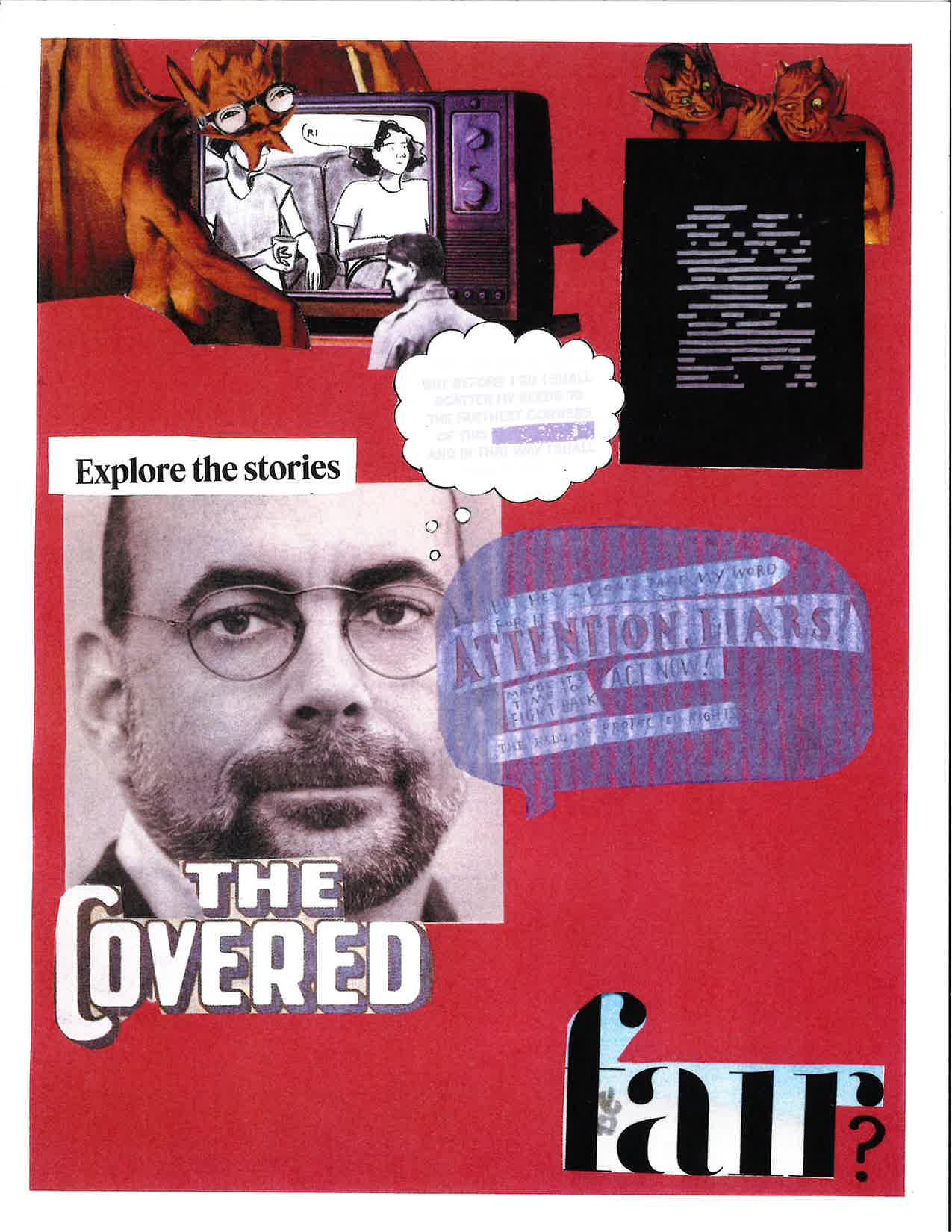

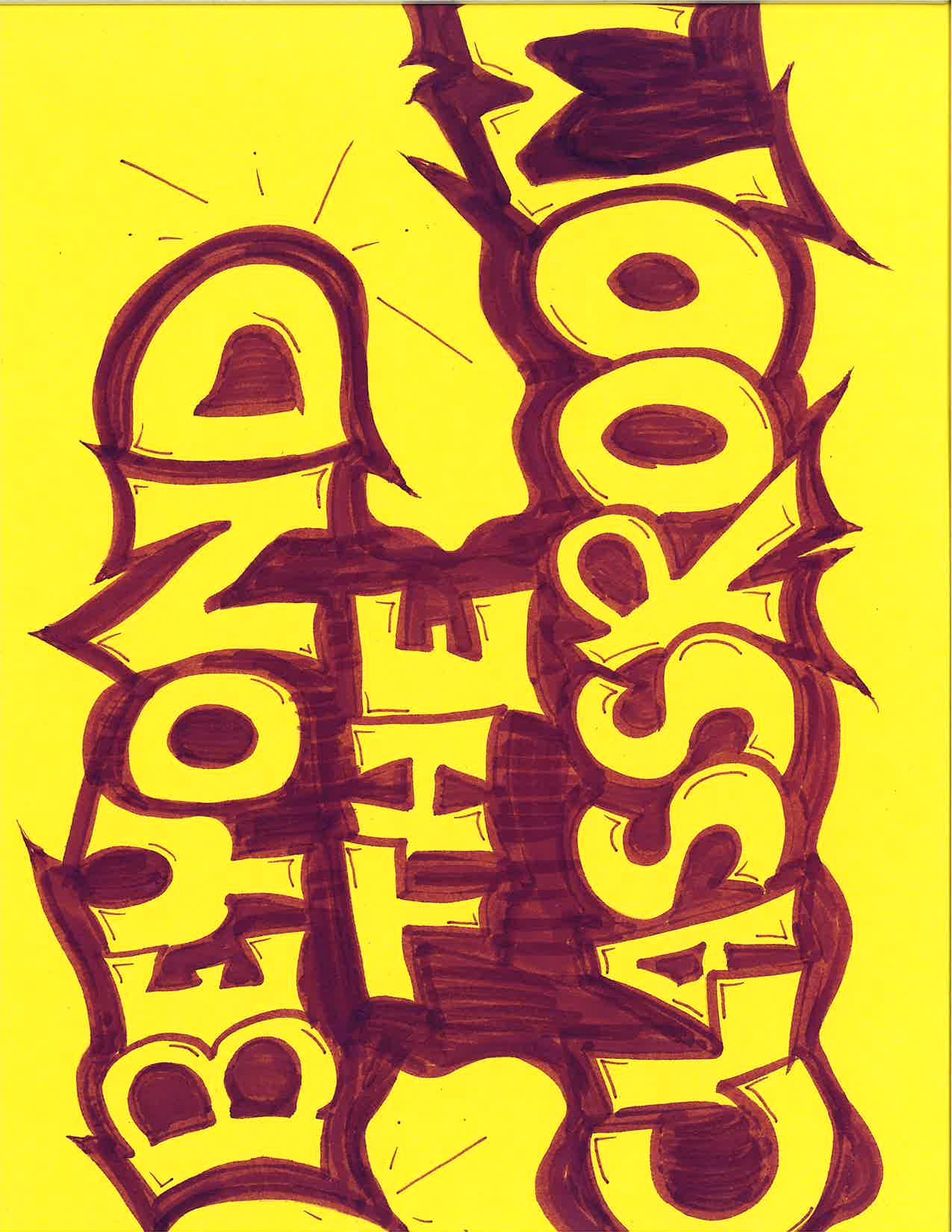




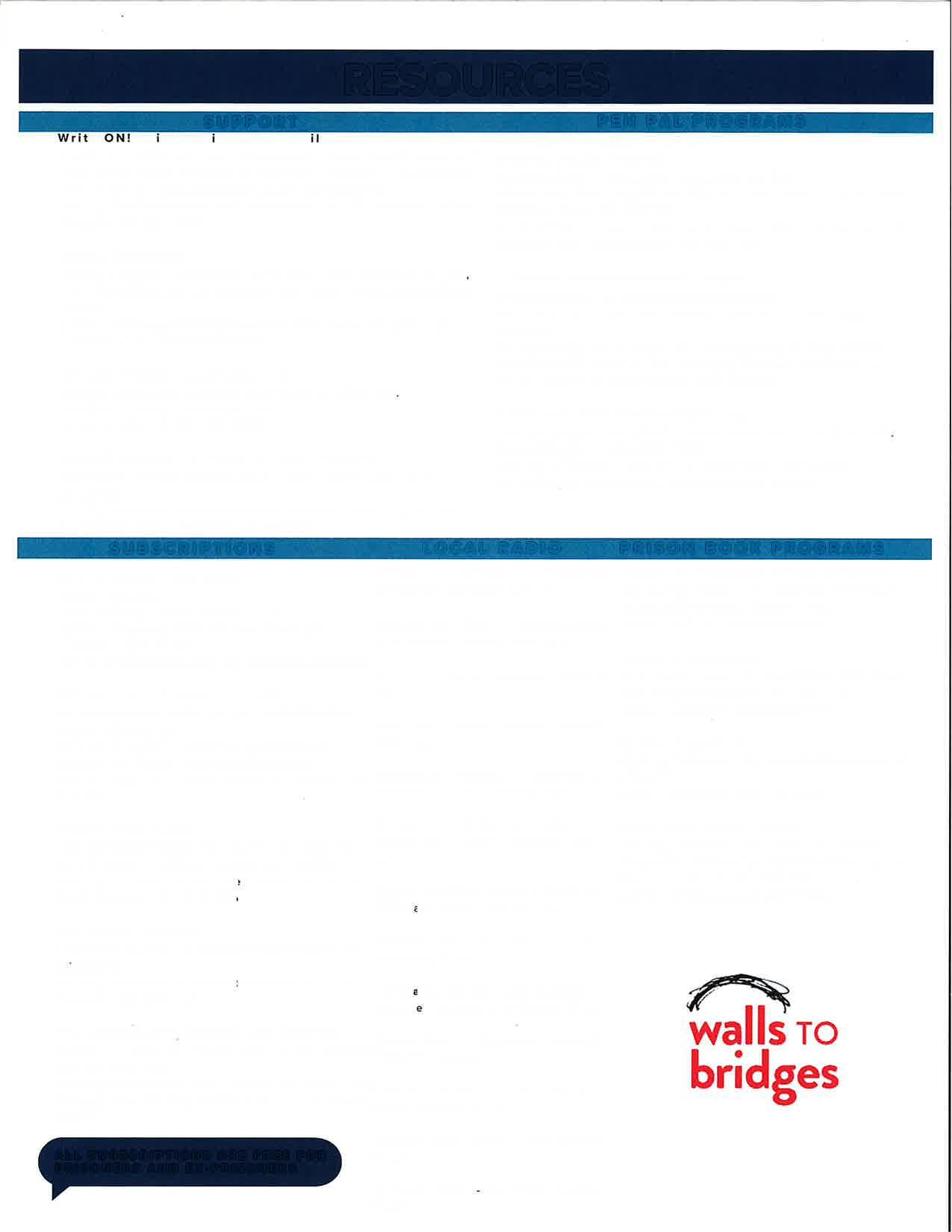



Canada is so polite
It’s like someone bumps into us in the Tim Hortons line
And we say sorry
We’re always saying sorry

CANADA IS SO POLITE
by El Jones
(an excerpt)
Well, I mean, not to the Indigenous Peoples for stealing their land
And Harper only kind of apologized for residential schools crossing.
XXX the fingers on his hand
And not to Angelique who we hanged
And not to everyone we bombed in Afghanistan
And not for the internment of the Japanese
Or for the deaths on the railroad built by the Chinese
And not for breaking the Treaties
Or racist immigration policies
But we ’ re so polite
We always say please
Well, not to our migrant workers or imported nannies
But they should get down on their knees
Because Canada is the promised land
No, there was no slavery
Just the Underground Railroad because Canada is a gravy train
So forget about the ads for runaway slaves in Halifax newspapers
Canada is a safe haven
For lazy immigrants who come here, and we just give you welfare
Earned by hardworking white taxpayers
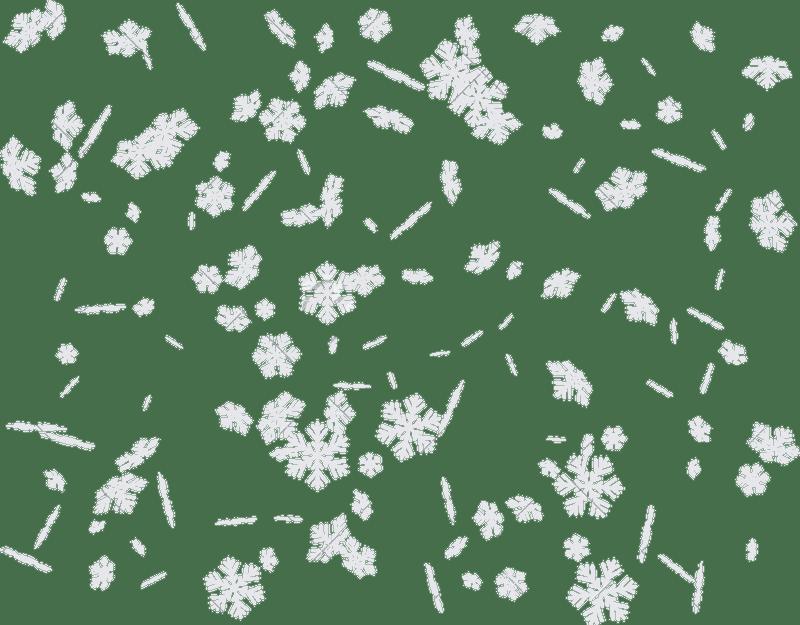



Because Canada is so white
Just rosy-cheeked white people playing in the snow and ice [...]
So sincere at pretending there’s no blood on our hands
Because Canada’s not like that, Canada’s white as a lamb
And those “other” people, they’re so angry
But true Canadians just don’t understand

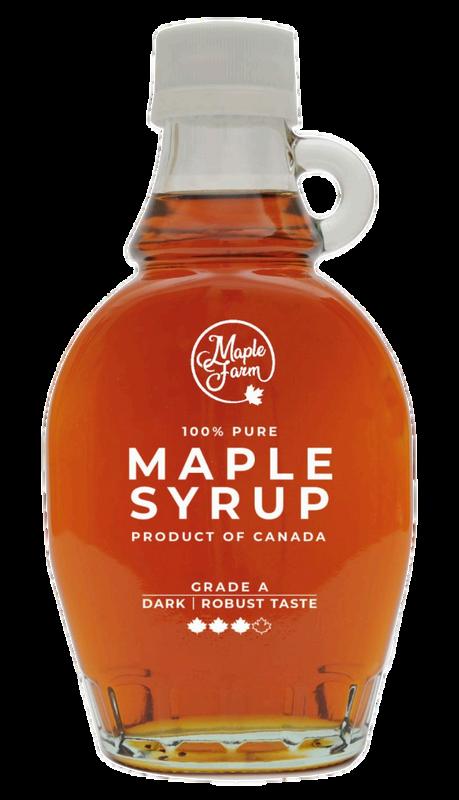







AUSTRALIA IS SO LAIDBACK
by Serrin R (an homage)

Australia is so laidback
It’s like someone bumps into us in the Maccas line
And we say “She’ll be right!”
We’re always saying she’ll be right
We say it to the Indigenous Peoples after stealing their land
(No need for Howard to Apologise to the Stolen Generations when it’ll all be right in the end) XXX
We say it to the Elizabeth Woolcocks who we hang for their troubles XXX

And to everyone we bombed in Afghanistan
And to the Japanese whom we interned
And to the Chinese whom we attacked on the goldfield
No Treaties with First Nations?
No Voice to Parliament? She’ll be right, mate
We always say she’ll be right
Well, we ’ re not so laidback when it comes to refugees
Because they should have got in line
No queue-jumpers down under in the Great Southern Land
No, there was no slavery

Just boundless wealth to toil for Pacific workers in the Queensland canefields XXX
So forget about the chains we used to keep them there
Australia is a land of golden soil
For those who’ve come across the seas, and then bludge on the dole XXX
Earned by hardworking white taxpayers
Because Australia is so white


Just rosy-cheeked white people playing in the sand and surf
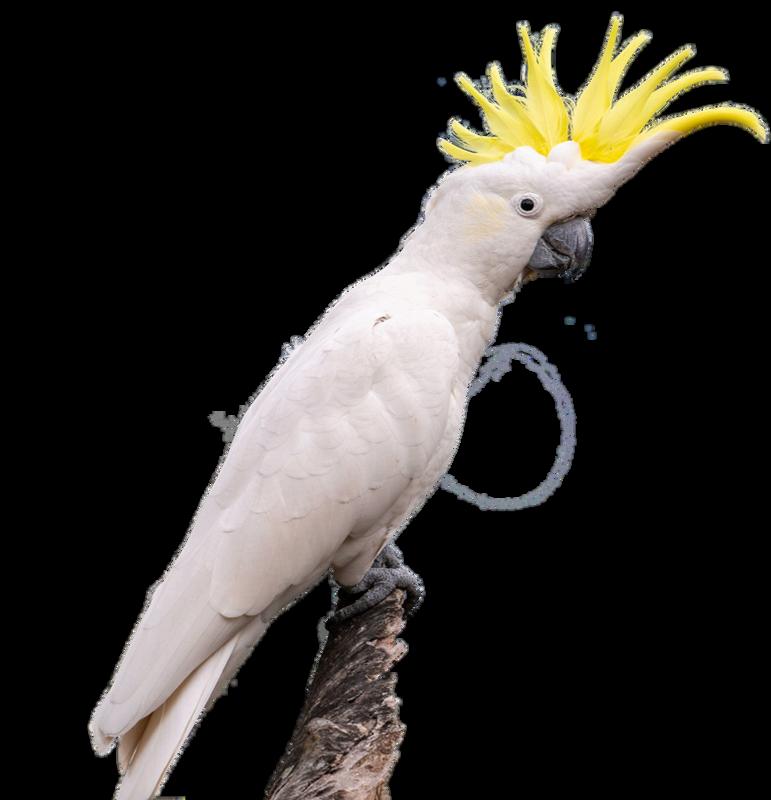
So sincere at pretending there’s no blood on our hands
Because Australia’s not like that, Australia’s white as the merino whose back we built the country on XXX
And those “other” people, they just don’t have the skin that it takes
To Advance Australia Fair



The Panopticon

M a i s i e K a n e
H O ? W H A T ? W H E R E ? W H E N ? W H Y ?
Notes on Bentham and Foucault
T h e P a n o p t i c o n i s t h e n a m e
o f a p r i s o n d e s i g n e d b y
1 8 t h - c e n t u r y p o l i t i c a l
p h i l o s o p h e r J e r e m y
B e n t h a m ( G u e n t h e r 2 0 2 4 )
T h e t e r m “ p a n o p t i c o n , ”
c o i n e d b y B e n t h a m a n d
d e r i v e d f r o m A n c i e n t
G r e e k , m e a n s “ t o s e e
e v e r y t h i n g ” a n d d e s c r i b e s
t h e d e s i g n p r i n c i p l e o f t h e
p r i s o n ( G u e n t h e r 2 0 2 4 ) .
B e n t h a m b e l i e v e d t h a t
p r i s o n s w o u l d b e m o r e
e f f e c t i v e i n p r e v e n t i n g
o v e r c r o w d i n g , w h i c h w a s
a n i s s u e i n t h e l a t e 1 8 t h
c e n t u r y i n E n g l a n d , w i t h a
d e s i g n w h e r e a c e n t r a l
g u a r d t o w e r w a s
s u r r o u n d e d b y a c i r c l e o f
p r i s o n c e l l s
U l t i m a t e l y , t h i s d e s i g n
e n a b l e d t h e g u a r d t o w e r t o
m o n i t o r a l l c e l l s w h i l e
p r e v e n t i n g p r i s o n e r s f r o m
s e e i n g i n t o t h e t o w e r
A s a r e s u l t , i n m a t e s c o u l d
n e v e r b e c e r t a i n w h e t h e r
t h e y w e r e b e i n g o b s e r v e d ,
r e d u c i n g t h e n e e d f o r a
l a r g e n u m b e r o f g u a r d s t o
m a n a g e t h e p r i s o n
e f f e c t i v e l y . T h i s p r i s o n
d e s i g n n o t o n l y a d d r e s s e d
p r a c t i c a l c o n c e r n s o f t h e
1 8 t h c e n t u r y b u t a l s o l a i d
t h e g r o u n d w o r k f o r d e e p e r
p h i l o s o p h i c a l d i s c u s s i o n s o n p o w e r a n d c o n t r o l , a s
l a t e r e x p l o r e d b y M i c h e l
F o u c a u l t i n h i s a n a l y s i s o f
“ p a n o p t i c p o w e r ” ( F o u c a u l t 1 9 7 9 )
F o u c a u l t , a 2 0 t h -
c e n t u r y p h i l o s o p h e r
a n d h i s t o r i a n , a n a l y s e d
B e n t h a m ’ s p a n o p t i c o n .
F o u c a u l t d e s c r i b e d t h i s
c o n c e p t o f “ p a n o p t i c
p o w e r ” a s a f r a m e w o r k
f o r e x e r c i s i n g c o n t r o l
b y c r e a t i n g a
p e r c e p t i o n o f c o n s t a n t
s u r v e i l l a n c e ( F o u c a u l t
1 9 7 9 ) . F o u c a u l t a r g u e d
t h a t t h i s m e t h o d o f
p o w e r e x t e n d s b e y o n d
p r i s o n s t o i n f l u e n c e
b e h a v i o u r i n v a r i o u s
a s p e c t s o f s o c i e t y
( F o u c a u l t 1 9 7 9 ) .
W
Modern Panopticism and Surveillance
F o u c a u l t a s s e t s t h a t t h e
s t u c t u e o f p a n o p t i c p o w e
e x e t s p o w e o v e t h e s u b j e c t s
b y m a k i n g t h e m f e e l a s i f t h e y
a e a l w a y s b e i n g s u v e i l l e d
( F o u c a u l t 1 9 7 9 ) . B y f e e l i n g l i k e
o n e i s a l w a y s b e i n g w a t c h e d ,
t h e y a c t a s i f t h e y a e ,
u l t i m a t e l y l e a d i n g t o a t y p e o f
s e l f - i m p o s e d e s t i c t i o n o f
f e e d o m ( F o u c a u l t 1 9 7 9 ) .
B a s e d o n F o u c a u l t ’ s
c o n c e p t u a l i z a t i o n , t h e m o d e n
s t a t e a s s e t s p a n o p t i c p o w e
t h o u g h a v a i e t y o f
m e c h a n i s m s . F o e x a m p l e , t h e
p e s e n c e o f s p e e d c a m e a s ,
e d l i g h t c a m e a s , o p o l i c e
w i t h s p e e d o m e t e s i m p o s e
e s t i c t i o n s o n d i v i n g f e e d o m
a s d i v e s i n t e n a l i z e a f e e l i n g
o f c o n s t a n t s u v e i l l a n c e

M a i s i e K a n e
T h i s l e a d s t o d i v e s c o n d u c t i n g
t h e i b e h a v i o u a s i f t h e e i s
a l w a y s a p o l i c e o f f i c e w i t h a
s p e e d o m e t e , a s t o p l i g h t w i t h a
c a m e a , o a n a u t o m a t e d c a m e a
a o u n d , w h e t h e o n o t t h e e i s .
W h e n F o u c a u l t w a s c i t i u i n g
a n d e x p a n d i n g u p o n t h e
i m p l i c a t i o n s o f p a n o p t i c p o w e ,
t h e m a i n a c t o s a s s e t i n g p o w e
a n d s u v e i l l i n g p e o p l e w e e t h e
s t a t e , a n d t h e m e c h a n i s m s
t h o u g h w h i c h s u v e i l l a n c e w a s
c o n d u c t e d w e e l i m i t e d .
H o w e v e , a s t h e w o l d b e c o m e s
m o e t e c h n o l o g i c a l l y a d v a n c e d
a n d u s e d a t a b e c o m e s t h e
c u e n c y o f t h e d e c a d e , t h e e i s
g o w i n g c o n c e n t h a t p a n o p t i c
s u v e i l l a n c e , w h e t h e u t i l i z e d b y
g o v e n m e n t s , b i g t e c h , o o t h e
a c t o s , i s i n c e a s i n g l y i n v a s i v e
a n d a l l - e n c o m p a s s i n g .
U l t i m a t e l y , w h e t h e i t i s t h e u s e
o f a t i f i c i a l i n t e l l i g e n c e f a c i a l
e c o g n i t i o n t e c h n o l o g i e s , p o l i c e
b o d y - w o n c a m e a s , i n t e n e t
a n d s o c i a l m e d i a m o n i t o i n g
s y s t e m s , o a n y o t h e s i m i l a
t e c h n o l o g y w h i c h s u b j e c t s
c i t i z e n s t o n o n c o n s e n s u a l
s u v e i l l a n c e , p a n o p t i c p o w e
a s s e t e d b y t h e g o v e n m e n t a n d
o t h e a c t o s i s i n c e a s i n g l y
i n v a s i v e a n d w i d e s p e a d
A d d i t i o n a l l y , w i t h a n y f o m o f
c o e c i v e p o w e e x i s t i n g o v e t h e
b a c k d o p o f a s o c i e t y b u i l t o n
t h e s u b j u g a t i o n o f m a g i n a l i z e d
g o u p s , p a n o p t i c p o w e h a s a n d
c o n t i n u e s t o h i g h l i g h t , e i n f o c e ,
a n d i n c e a s e s t u c t u a l
i n e u i t i e s a n d i n e u a l i t i e s i n
s u v e i l l a n c e , p o l i c i n g , i n c a c e a t i o n , a n d o p p e s s i o n

